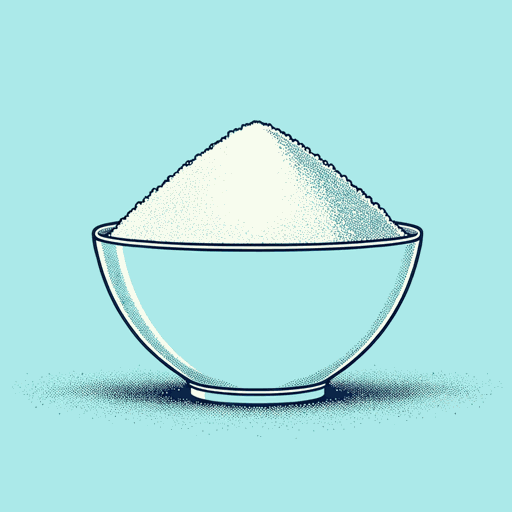67 pages • 2 hours read
Michael MossSalt Sugar Fat
Nonfiction | Book | Adult | Published in 2013A modern alternative to SparkNotes and CliffsNotes, SuperSummary offers high-quality Study Guides with detailed chapter summaries and analysis of major themes, characters, and more.
Summary and Study Guide
Overview
Salt Sugar Fat is a 2013 nonfiction book by Michael Moss. It describes the modern American food industry. The author visits the corporate headquarters, scientific research facilities, and marketing departments of major food manufacturers. He also talks with consumer advocates and other involved parties to understand the ongoing obesity epidemic.
Through industrial processes, food companies remove nutritious components and substitute cheaper, harmful ingredients. The key ingredients in most processed foods are salt, sugar, and fat. Manufacturers then advertise these products to consumers, including children, much like the advertising of tobacco. The food industry could face legal and political consequences comparable to those faced by tobacco companies.
Growing obesity rates over recent decades have resulted in shocking statistics, with millions of consumers looking to blame someone for their health outcomes. Obesity from overeating could explain the epidemic of major diseases, and their ensuing social and economic costs. Media reports blame the food companies. Government also faults the food industry.
In secret meetings, food industry executives discuss the problem of their reliance on salt, sugar, and fat contributing to obesity. The executives decide to continue selling these products to grow their businesses, regardless of health consequences.
In the first part of the book, Moss visits the research, production, and marketing divisions of sugary food producers. Pillsbury executive James Behnke has concerns over the health effects of his industry’s products.
Moss investigates food poisoning cases, and finds that manufacturers manipulate safety procedures, making food less safe.
The author visits a soda research laboratory. Here, scientists demonstrate how to manufacture a soda with the ideal amount of sugar, or “bliss point,” to make people want to drink more.
Scientists investigate how the body responds to sugar. They apply this knowledge to make foods more appealing.
Dr Pepper hires Howard Moskowitz to fix its product line. He applies psychology and statistics to produce popular products. Moss and Moskowitz eat at a diner, where the latter finds Dr Pepper disgusting. He, and many other food scientists, make products that other people like, but that they themselves do not.
Food scientists and marketers at General Foods invented convenience foods in the wake of World War II. Sugar adds flavor, texture, and shelf life. As women entered the workforce, convenience became a consideration as important as flavor and cost.
Government workers continued to promote traditional cooking. However, convenience food won in the market.
John and Will Kellogg started a health retreat, limiting foods deemed unhealthy. They produced an unsweetened cereal. Will added sugar, and it became popular. A guest of their retreat, C.W. Post, invented Grape-Nuts.
Cereal companies outdid each other in sales by adding sugar. Then the ingredient became a public health concern, and dentists pushed for regulation.
Jeffrey Dunn had a senior position at Coca-Cola. After marketing the soda throughout North and South America, Dunn realizes the harm caused by sugar. He leaves the company and develops healthier products.
After tobacco company Philip Morris acquired large food companies Kraft and General Foods, it added its marketing clout to sell sugary foods.
Food manufacturers research and develop sugars that have more sweetness at less cost. They also research the effects of dietary fat.
Milk went out of fashion due to its fat content, yet industry and government converted the excess products into cheese.
Oscar Mayer develops Lunchables to cater to kids’ desire for freedom, and mothers’ preference for time-saving.
The United States Department of Agriculture regulates meat and dairy. It also operates an advertising program to promote these products, producing a conflict of interests.
Some Kraft insiders express concern over the health effects of their products. They organize a panel, improve product labeling, and introduce limits to salt, sugar, and fat. However, the market responds to consumer demand, so Kraft and other companies continue to increase these ingredients.
Salt makes food taste better and last longer. In response to public health concerns, food companies produce reduced-salt products. However, these taste worse and sell less.
Moss discusses with food scientists how salt can form addictions. Amid concern over high blood pressure and heart disease, food companies market salt as a food to eat without worrying.
Moss visits Nestle, which has surpassed Kraft as the largest producer of processed foods. There, scientists investigate how to make fat healthier. Moss concludes that food scientists have made their products so appealing that they cannot fix the addictiveness and ensuing health problems.
In conclusion, Moss writes that the food industry wages war on consumers to compel them to eat more salt, sugar, and fat. By engineering and marketing appealing foods, the manufacturers sell cheap, unhealthy foods. Moss considers this book a defense for consumers against the food industry.

